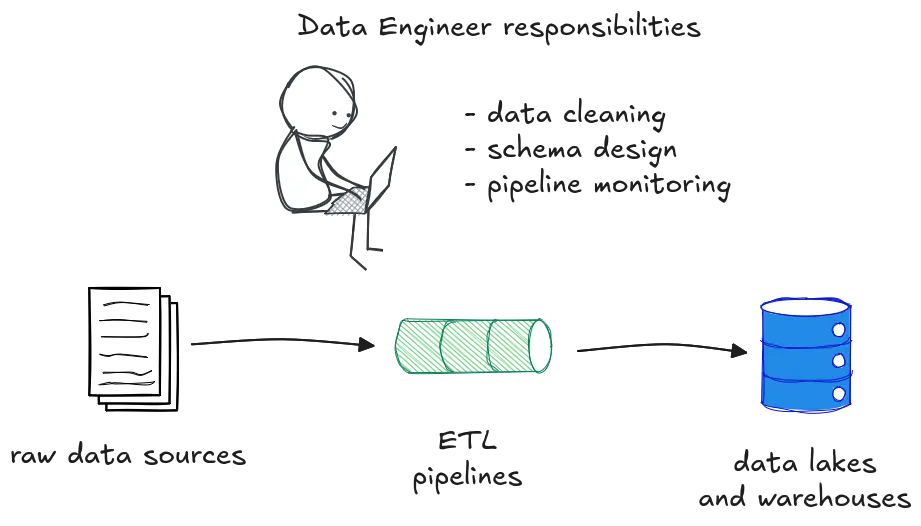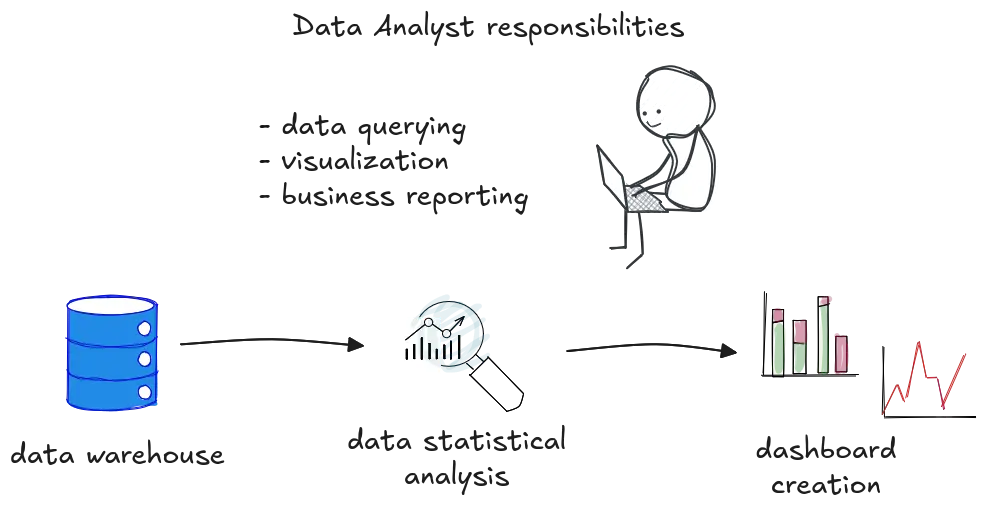Your team just pulled in a massive dataset from multiple sources. But now what? Without clear collaboration between data engineers and data analysts, that raw data stays just that: raw. In modern data projects, data engineers and data analysts play distinct yet connected roles to transform data into actionable dashboards and insights.
Why Data Engineers Lay the Groundwork First
Every data project starts with the data infrastructure. The data engineer ensures that data from various systems, like web traffic logs, CRM exports or transactional databases, flows smoothly into centralized storage like a data warehouse. Using tools like Apache Airflow or dbt, engineers build automated pipelines to clean, transform, and load this data, ensuring it's reliable and up-to-date.

In a real project, the data engineer sets up a daily process that pulls transactional data from the production system into a cleaned dataset, making it ready for the analysts to explore without the need for tedious, manual data wrangling.
How Data Analysts Turn Data Into Insights
Once the pipelines are running, the data analyst steps in. Analysts query this prepared data, applying business logic to answer specific questions. In the same project, the analyst might investigate trends like “Which products are seeing increased sales week over week?” They build interactive dashboards that allow stakeholders to monitor KPIs in real-time and adjust strategies accordingly.

Through this flow, data engineers ensure data is accessible and reliable, while analysts transform it into meaningful insights. This collaboration is essential for any AI-driven data analysis.
Misaligned Data Expectations
Without proper coordination, analysts might work with incomplete or misaligned data. For example, if the engineer changes pipeline logic but doesn’t communicate it, the analyst’s dashboards could show misleading trends or even break entirely. That’s why clear data contracts and shared documentation are essential to keep workflows stable and reliable.
Best Practices for Data Collaboration
- Shared version control: Both engineers and analysts can use Git to track changes to pipelines, queries, and dashboards.
- Regular syncs: Weekly standups, often managed with tools like Arrangr, help teams align on schema changes and business priorities.
- Integrated tools: Using platforms like Briefer helps teams connect their pipelines directly with dashboards seamlessly.
These practices help teams avoid duplicated effort and maintain data reproducibility.
From Raw Data to Executive Dashboard
Consider a project where a fintech company wants to monitor user churn. The engineer creates pipelines that aggregate user activity logs, applying transformations to flag churn-prone behaviors. The analyst then uses this dataset to build a churn risk dashboard that executives consult weekly.
From engineering pipelines to analytical insights, this real-world flow demonstrates how collaboration drives impactful data products.
FAQ
What’s the main difference between a Data Engineer and a Data Analyst?
Data Engineers build and maintain the infrastructure for data collection and processing, while Data Analysts interpret that data to generate insights and support business decisions.
How do Data Engineers and Analysts collaborate in real projects?
Data Engineers ensure data is clean, structured, and accessible. Data Analysts then use that data for analysis, creating reports and dashboards that inform strategy and operations.
How does Briefer help Data Engineers and Analysts?
Briefer enables both roles to transform data into shareable dashboards and visualizations quickly. It integrates with modern data workflows, streamlining collaboration and accelerating insight delivery.
How do analysts explore the data prepared by engineers?
Analysts often perform Exploratory Data Analysis (EDA) to understand the dataset's main characteristics. You can learn more in our Exploratory Data Analysis with AI guide.
From Raw Data to Collaborative Insights
By bridging the work of data engineers and analysts, organizations can streamline their data workflows from infrastructure to insight. With tools like Briefer, teams can quickly transform raw data into shareable dashboards and actionable visualizations, reducing friction between engineering and analysis. Start a free trial now and see how seamless collaboration enhances your data projects.
